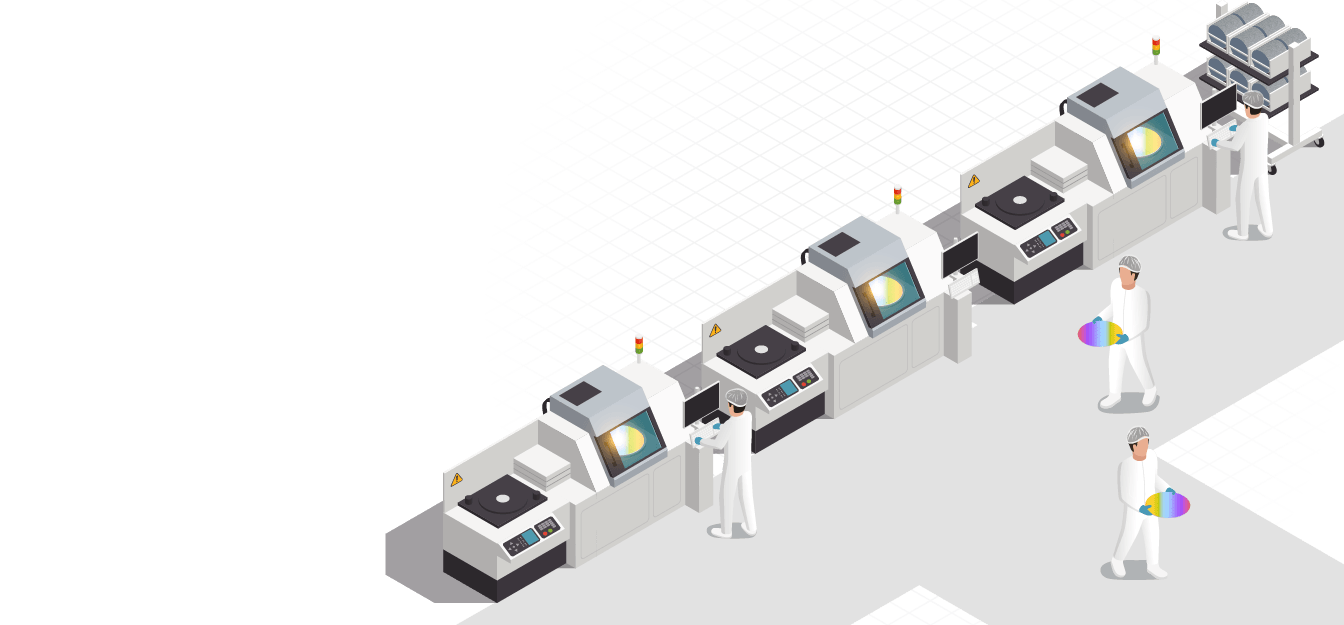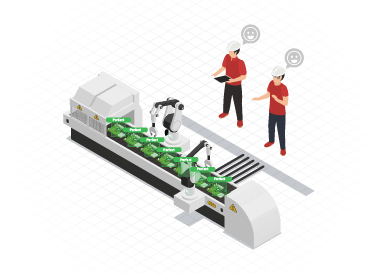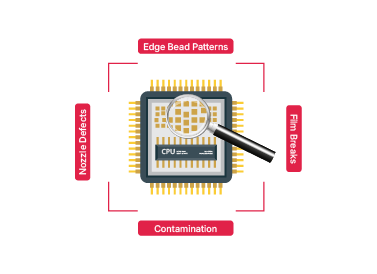Resist Coating Uniformity & Defect Monitoring
Perfect the Coat. Eliminate Contamination. Ensure Photolithography Precision.


Photoresist coating is the first critical step in wafer patterning, any variation in film thickness, streaks, or contamination can cause pattern distortion or complete lithography failure. Yet, traditional inline checks or manual inspections often miss these subtle but fatal errors.
AI-powered Resist Coating Uniformity & Defect Monitoring uses computer vision to continuously inspect resist film application in real-time. It tracks film consistency, detects defects like bubbles, streaks, and particles, and identifies non-uniform thickness across the wafer, before the wafer reaches the exposure tool.
Variations across wafer radius or from batch-to-batch can result in uneven exposure or resist development.
Bubbles, streaks, or particles are difficult to catch without consistent high-resolution inspection.
Poor edge bead removal (EBR) or aging resist causes contamination at the wafer edge, reducing usable area.
Defects are often discovered only after exposure or development, too late for correction.
High-speed cameras scan coated wafers for surface anomalies and coating consistency before exposure.
Visual data is processed to detect microns of variation across wafer zones and flag abnormal patterns.
Identifies EBR failures, air bubble entrapments, and inconsistent spin profiles that can compromise quality.
Automatically stops defective wafers from progressing and recommends rework, saving exposure tool cycles.


We begin by identifying the optimal inspection point, typically between the spin coater and EBR or before bake, to ensure full visual access before exposure.
Camera and lighting systems are tuned to work across multiple resist chemistries and coating speeds, with configurable profiles for each product line.
Our models are trained using historical coated wafer data, including edge bead patterns, film breaks, nozzle defects, and particulate contamination.
The inspection system sends “pass,” “hold,” or “re-coat” commands directly to your MES system, while simultaneously logging heatmaps and coating stats per wafer ID for traceability.
Stay updated with the trending and most impactful tech insights. Check out the expert analyses, real-world applications, and forward-thinking ideas that shape the future of AI Computer Vision and innovation.
People usually don’t think about logistics until there’s a delay in order delivery. On the other hand, there are millions of products that move across borders every single day, as their journey includes going through different ports, warehouses and distribution centres before the product reaches its respective owner. So there’s a lot that happens behind […]

CEO & Co-founder
Some achievements do not arrive with loud announcements or dramatic celebrations. They arrive quietly, almost gently, carrying a kind of weight that only people close to the work fully understand. WebOccult’s Best Paper recognition at the IEEE was one such moment. Out of more than 450 research papers submitted from across the world, only five […]

CEO & Co-founder
When we discuss the ways to improve quality in factories today, one solution that often comes up is Computer Vision in manufacturing. Supervising a production line makes it clear how easily small issues can go unnoticed. A small crack, a misplaced center label, or a missing screw may seem irrelevant, but these small problems can […]

CEO & Co-founder